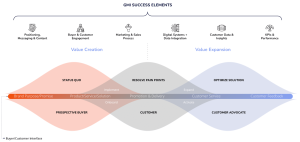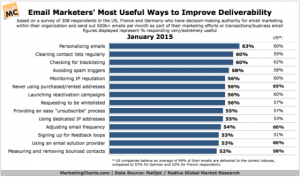3 ways leaders can strike the right balance between confidence and caution
Extremes in confidence and caution can affect decision-making, team performance, and overall leadership effectiveness, this executive coach says.
Leadership requires a delicate balance between confidence and caution. Both are needed, and leaders must be able to move between them. Yet there are leaders whose default is the extremes. Some leaders always want to be right and on the other side of the spectrum; others are always trying to avoid being wrong at all costs. One is overconfident, and the other is overcautious. These two leadership approaches, as blind spots, can have severe consequences on their decision-making, relationships, and overall effectiveness.
Consider Alex and Taylor, both senior executives at different tech firms. Alex was known for his assertiveness and confidence, but his team had become increasingly disengaged and less efficient. On the other hand, Taylor was well-liked by his team, but they struggled to make timely decisions, affecting the team’s effectiveness. For instance, Alex’s team missed a crucial deadline due to his overconfidence in their ability to deliver. In contrast, Taylor’s team lost a potential client because of his overcautious approach to decision-making.
Both leaders were concerned about how their team’s performance would reflect on them. They both thought their team lacked accountability. However, it was evident that the problem wasn’t their team; it was their leadership style. Alex was highly overconfident, and Taylor was extremely overcautious.
The leadership impact
When leadership leans towards extremes, it can have far-reaching effects, impacting team dynamics and the organization’s long-term health. For example, Alex’s overconfidence was evident in a commanding and isolated decision-making style. This approach initially seemed effective, but it eventually led to resentment among team members who felt their insights and expertise were undervalued. This hindered team innovation and eroded trust, as team members questioned the validity of decisions made without their input. The result was a decrease in productivity and an increase in turnover.
Taylor’s overcautious approach created a bottleneck in decision-making processes. His risk avoidance often led to missed opportunities and delayed responses. In high-stakes situations, this indecisiveness was particularly harmful, as it prevented the team from capitalizing on opportunities that required swift action. Furthermore, Taylor’s risk-averse nature meant that his team operated within a very narrow comfort zone, hindering their ability to adapt to new challenges or explore innovative solutions.
The Psychology of Confidence
If you lean towards being overconfident, you might remember all the times your gut decisions were spot on, conveniently forgetting the messes you’ve had to clean up. Or, if you’re the overcautious type, you might focus on the disasters you’ve avoided while not noticing the opportunities you’ve missed by not stepping out of your comfort zone.
This selective memory can make us stubborn about changing our ways or even acknowledging we might be off track. It can lead us to dismiss valuable feedback or misread situations, attributing success or failure to the wrong causes. It’s not just about protecting our egos—sometimes, we genuinely believe our approach is the best way forward. As David Dunning explains in his book, Self-Insight, we don’t question ourselves enough. This leads to “knowledge deterioration,” a term used to describe the decline in the quality or accuracy of our expertise over time, simply because we are closed to outside perspectives and new information.
Becoming a more balanced leader
First things first, do you truly understand your leadership style? Reflecting on the feedback you have received in the past, what has it revealed? Does it align with your gut feeling about how you lead? To get a clearer picture, take this simple self-assessment. It is designed to help you pinpoint your leadership tendencies. Then, start reshaping your leadership qualities by acting on the three following practices that will help you evolve into a more balanced leader. Remember, this is a journey of growth and improvement, and every step you take brings you closer to becoming a more effective leader.
Practice Humility
People are attracted to leaders who are vulnerable and approachable. Admitting where you are falling short and seeking advice from those you want to influence shows courage and humility at the same time. Humble leaders are more attentive to the strength of evidence and are more interested in understanding the people who might disagree with them. Therefore, it’s important to schedule regular conversations, show appreciation for the input you have received, recognize contributions, and share what you have learned. Most importantly, ask for suggestions on what you can do better in the future. This practice increases psychological safety and starts the process of perception change. If they know what you are working on, they are more likely to see your progress.
Ask yourself:
- What recent feedback have I received that I might have overlooked or dismissed too quickly? How can I address it?
- In what situations have I recently failed to acknowledge the contributions of others?
Actions to take:
- Schedule regular feedback sessions with your team where you actively seek their input on your leadership style and decisions.
- Publicly acknowledge the contributions and achievements of team members during meetings to foster a culture of appreciation and respect.
Practice self-compassion
When you start feeling insecure or judgmental, take a moment to reframe your state of mind and show kindness to yourself. Remember, leadership is a challenging role, and it’s okay to make mistakes. When you show self-compassion, you give yourself permission not to be perfect and accept that making mistakes is part of the human experience. They don’t define your worth or competence but enhance your ability to take more risks and expand your comfort zone. Be kind to yourself, and you’ll find that it’s easier to lead with confidence and balance.
Ask Yourself:

- When was the last time I was too hard on myself for a mistake? What can I learn from that situation?
- How do my self-critical thoughts affect my decision-making and leadership?
Actions to Take:
- Implement a reflection ritual after significant events or decisions where you assess the outcomes and how you treated yourself during the process.
- Create a “learning log” where you capture mistakes and the critical insights gained, promoting a mindset of growth rather than perfection.
Empower your team
Making all the decisions yourself is hard work; over time, it becomes unsustainable. It can lead you to fail at one of your key leadership roles: unlocking the full potential of individuals and the team. By unlocking employee empowerment, you prepare yourself and your direct reports for promotion and alleviate the self-imposed pressure of making all the decisions. Empowerment also gives your team a trifecta, ensuring engagement: recognition of their work, the relevance of their contributions, and the visibility of their work. Aim to create a collaborative culture where everyone is encouraged to speak. You can start doing this by soliciting ideas in team meetings, asking for suggestions and options, and pushing down accountability. Empowering your team not only benefits them but also enhances your leadership effectiveness and the overall success of your organization.
Ask Yourself:
- What decisions have I made recently without consulting my team? Could these decisions have benefited from their input?
- How do I currently distribute responsibilities and decision-making powers among my team?
Actions to take:
- Start delegating more tasks, particularly those that help develop your team members’ skills and leadership potential.
- Organize brainstorming sessions where team members can voice their ideas and suggestions, actively incorporating their input into final decisions.
Take our test: a leadership style assessment
Here is a simple self-assessment questionnaire to help you determine your preferred leadership approach. For each statement, rate yourself on a scale of 1 to 5, with 1 being “strongly disagree” and 5 being “strongly agree.”
- I often make decisions quickly and confidently.
- I feel uncomfortable when others challenge my ideas or opinions.
- I believe it is crucial to demonstrate my expertise and competence as a leader.
- I prefer to make decisions independently rather than seeking input from others.
- I am reluctant to admit when I am wrong or have made a mistake.
- I tend to avoid making decisions until I have gathered input from everyone involved.
- I often worry about the potential negative consequences of my decisions.
- I am more comfortable when there is a consensus among my team members.
- I prioritize minimizing risks and avoiding mistakes in my decision-making.
- I am open to admitting my mistakes and learning from them.
Scoring: Add up your scores for statements 1-5. This will give you a total score for the “always trying to be right” mindset. Add up your scores for statements 6-10. This will give you a total score for the “always trying not to be wrong” mindset.
Interpretation: Compare your total scores for each mindset. The higher score indicates your preferred approach. If your scores are relatively close, you may have a more balanced leadership style that incorporates aspects of both mindsets.
Keep in mind that this self-assessment is a simple tool to help you gain insights into your preferred approach. It is not a comprehensive assessment, and your leadership style may be influenced by various factors and contexts. To gain a deeper understanding, consider seeking feedback from others, engaging in self-reflection, and working with a mentor or coach to further develop your leadership skills.
(8)
Report Post





